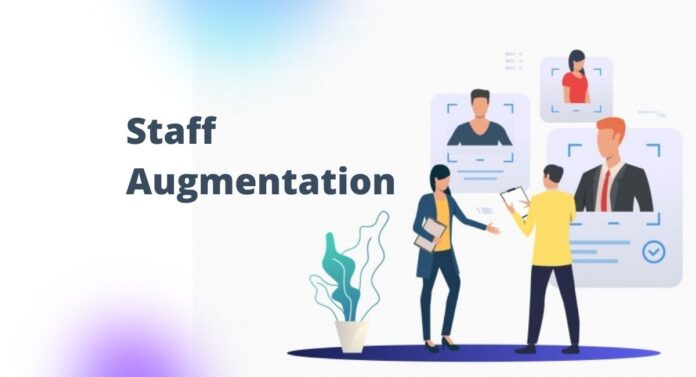Introduction
In the fast-paced world of business, agility has become synonymous with success. The ability to adapt swiftly to market changes, customer demands, and emerging technologies can make or break a company. One revolutionary approach that has gained prominence in recent years is staff augmentation. This article delves into the concept of staff augmentation, exploring its potential to break barriers and unlock agility in business operations.
Understanding Agile Business
Agile businesses are characterized by their flexibility, responsiveness, and ability to innovate rapidly. In a competitive market, where change is constant, agility provides a distinct advantage. It allows companies to pivot quickly, seize opportunities, and stay ahead of the competition. The benefits of an agile approach extend beyond survival; they lead to sustained growth and customer satisfaction.
Challenges in Traditional Hiring
Traditional hiring processes, while effective, come with inherent challenges. The time-consuming nature of recruitment, coupled with a limited talent pool, can hinder a company’s ability to respond swiftly to market demands. The need for long-term commitments and the lengthy onboarding process may not align with the dynamic requirements of modern businesses.
Staff Augmentation: An Overview
Staff augmentation offers a compelling alternative to traditional hiring models. It involves supplementing an existing workforce with external talent for specific projects or periods. This approach provides companies with the flexibility and scalability needed to navigate the complexities of today’s business landscape.
Key Advantages of Staff Augmentation
- Rapid Response to Market Changes: Staff augmentation enables businesses to swiftly scale their teams up or down based on project requirements. This agility ensures that companies can adapt to market changes without being hindered by the constraints of a fixed workforce.
- Cost-Effectiveness: Unlike traditional hiring, staff augmentation allows companies to access skilled professionals without the long-term financial commitments. This cost-effective model ensures that businesses can optimize their expenditures while obtaining the expertise required for success.
- Access to Specialized Skills: In a rapidly evolving technological landscape, having access to specialized skills is crucial. Staff augmentation allows companies to tap into a diverse talent pool, ensuring they have the expertise needed for specific projects or challenges.
Implementing Staff Augmentation Successfully
Successful implementation of staff augmentation involves careful consideration and strategic planning.
- Identifying Project Needs: Companies must clearly define the objectives and requirements of each project before seeking external talent. This ensures a seamless integration of augmented staff into existing workflows.
- Selecting the Right Talent: Matching the skills and experience of external talent with the project’s demands is essential. Thorough screening and evaluation processes guarantee that the augmented team members contribute effectively to the project’s success.
- Integration with In-House Teams: To maximize the benefits of staff augmentation, companies need to facilitate smooth collaboration between in-house and augmented teams. Communication channels, project management tools, and a shared understanding of goals are vital for success.
Real-life Case Studies
Several successful businesses have embraced staff augmentation, experiencing positive impacts on their agility and overall performance. Case studies highlight specific instances where staff augmentation has enabled companies to overcome challenges and achieve their strategic objectives.
Addressing Concerns and Misconceptions
Despite its advantages, staff augmentation is not without concerns. Addressing issues related to security, confidentiality, and long-term viability is crucial for businesses considering this approach. Robust contracts, non-disclosure agreements, and a thorough vetting process for external talent can mitigate these concerns.
Choosing the Right Staff Augmentation Partner
Selecting the right staff augmentation partner is paramount. Factors such as reputation, experience, and compatibility with the company’s values should be considered. Thorough research and due diligence ensure a reliable and beneficial partnership.
Future Trends in Staff Augmentation
The landscape of staff augmentation is continually evolving. Future trends include deeper integration of technology, leveraging global workforce dynamics, and innovative approaches to talent acquisition. Staying abreast of these trends is vital for companies aiming to maintain a competitive edge.
Conclusion
Staff augmentation emerges as a key strategy for businesses aiming to achieve and sustain agility. Breaking barriers associated with traditional hiring, this approach enables companies to respond rapidly to market changes, access specialized skills, and optimize costs. As the business landscape evolves, staff augmentation promises to be a transformative force, unlocking new possibilities for growth and success.
FAQs
- What is the difference between outsourcing and staff augmentation?
- Outsourcing involves handing over entire business processes to external providers, while staff augmentation supplements an existing workforce with external talent for specific projects.
- How does staff augmentation contribute to cost savings?
- Staff augmentation allows businesses to access skilled professionals without long-term financial commitments, optimizing expenditures for specific projects.
- Can staff augmentation be applied to non-tech roles?
- Yes, staff augmentation is a versatile approach applicable to various roles, not limited to technology-related positions.
- Are there any risks associated with staff augmentation?
- Risks such as security concerns and confidentiality issues can be mitigated with thorough contracts, non-disclosure agreements, and a careful selection process.
- How can businesses measure the success of staff augmentation?
- Success in staff augmentation can be measured by evaluating the impact on project timelines, cost-effectiveness, and the overall achievement of project objectives.


 Welcome to Infinitive Creative where we share information related to Business, Tech and More. We’re dedicated to providing you the very best information and knowledge of the above mentioned topics.
Welcome to Infinitive Creative where we share information related to Business, Tech and More. We’re dedicated to providing you the very best information and knowledge of the above mentioned topics.